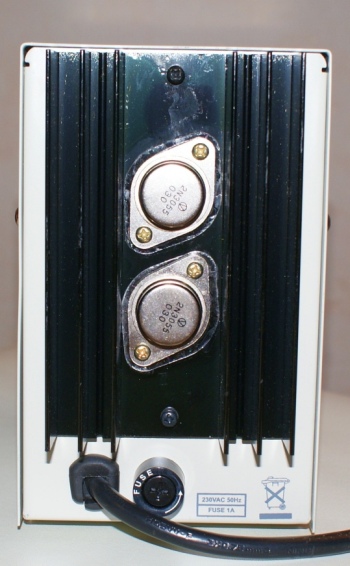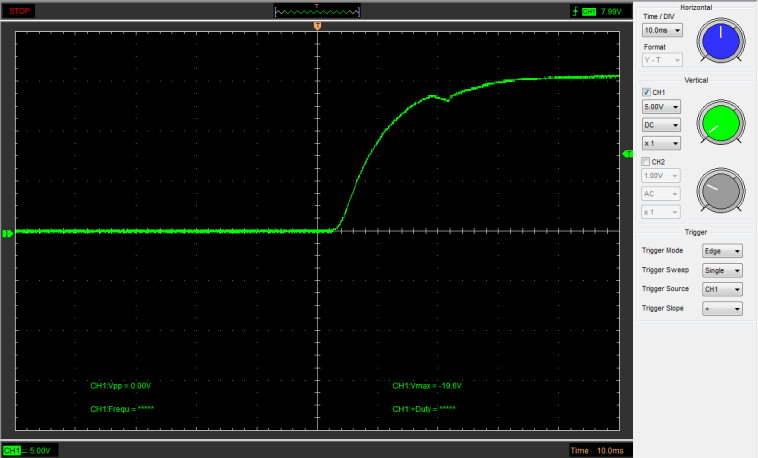Dear all,
Here is my review of the 0-15V, 0-3A Velleman/HQ Power PS1503SB Lab Power Supply. It looks formidably similar to the Mastech HY1503D, so maybe it's just a rebadged model.
Velleman Product:
http://www.velleman.eu/distributor/products/view/?id=348800Mastech Power Supply Page:
http://www.p-mastech.com/products/11_ps/ps.htmlBtw, salutations to SuperMiguel. I hope he gets his new Mastech unit and maybe we could compare the results.
I was thinking about building/purchasing a nice power supply for the home laboratory and started looking at the various options.
I was considering second-hand lab power supplies such as the Tektronix PS280, or some E-series Agilent PSU (we have a lot of these at work), but the price range was outside of what I was ready to spend for my modest lab.
I've also looked at the various Mastech PSUs. Some models were interesting, but I discarded this idea in favor of building my own supply.
So I've started gathering schematics, performing some small tests, simulations, browsing for things to buy, etc.
I've tried a microcontroller-based PSU and while it performed very nicely in a static mode, it had abysmal performance for a dynamic load, including blowing up my beloved TIP142 transistors. It's a shame really, since it had all the features I wanted: Voltage & Current Regulation & Measurement, etc.
I also have a lot of POLs and I can generate some nice voltage from those, including output voltage variation by digital potentiometers.
I've also tried the old & venerable LM723 and got a nice basic PSU.
Well, it should not have to be that difficult to build my own PSU, but then I contemplated the work I had to do, especially on the enclosure design and fabrication, and putting everything together in a nice format and I've reached the conclusion that I would prefer spending my time on doing other stuff (such as an elaborate Christmas tree light display). Especially since I had to buy some components, a new transformer, etc.
So, I browsed around some more and I didn't find any good sources for the Mastech PSU (too heavy => S&H costs). However, Velleman offers a selection of rebadged sources at affordable prices.
BTW, Velleman is kind of a big deal around here (France). Everybody carries Velleman stuff. The quality varies from great things for small prices (most of the kits) to some unusual implementation choices (K8048 Pic programmer) to some not so great deals (I'm looking at you stupid PCB DP-50 developer).
In the end, I've visited my local electronic component dealer and got home with a new PS1503 PSU at a OK-ish price of 75 euros. So let's see what I got:

I really like the format of the unit. It's compact, it's nice to look at at fits perfectly next to my Weller soldering station. So, first win!
The two LCDs are very clear, big & back-lighted. Very nice. Second win!
Let's see some more:

The workhorse(s) of the supply are two venerable 2N3055 transistors (remember those?):

OK, let's take it appart:
Insides:

A few words about the manufacturing quality: so-and-so. The solder points were OK-ish, not nice, but no problems too, the components are brand-name, and not some unnamed copies, the design and the implementation of the board quite fine, really.

The display is actually composed of two (quasi)identical 7106 boards:


The displayed values are quite accurate.
The control board is implemented around standard op amps: LM324 & LM741. There are also several power domains regulated by 78xx ICs.
The transformer has a section of 9 sq. cm which is quite reasonable for a maximal output power of 15V*3A = 45W. The maximum voltage (under load) at the output of the full wave rectifier is about 23 V, which is more than enough for a regulated output voltage of 15V. The wide voltage reserve makes me think about whether it is possible to get more voltage out of the source. There is also a HY1803D PSU with an output range of 0 to 18 V. Possibly it's the same unit but with different settings. Maybe when I'll have some time to understand the schematic, I will try some moding.
In order to minimize power dissipation by the 2N3055 transistors, the transformer has an intermediary tap and the source seamlessly switches to the middle tap when the output voltage is less than 7.5V (~ half of the maximal 15V). This way, the transistors will only have to dissipate maximum ~3A*~14V (rectified voltage of the middle tap) which makes about 42W, reasonable for the back cooler. I've let the source run in short-circuit for around 1 hour and the transistors only reached about 75* Celsius, which is quite OK.
The switching is done by an correctly-sized relay:

Now, let's talk about the performances of the source.
The maximum output is around 15.4 V @ 3.15 A. Fine for me.
You can set the voltage/current limits using the corresponding potentiometers. It's a bit difficult to set very precise levels, since the potentiometers are standard, 1-revolution pots. I was thinking about upgrading those to multi-turn parts, but seems to be difficult to find the required 6K8 value.
In any case, once set, the current limitation acts very nicely, not a problem whatsoever. The voltage regulation also it's fine, however you must account for an internal voltage drop of maximum 140mv for a 3A load. It seems that the internal source resistance is around 40 miliohms. It looks like the voltage drop is due to the (low value) current measuring resistor on the output of the source and there is no sensing on the actual output of the PSU to compensate for that.
You cannot tell whether the source works in the constant current or voltage since there is no indicator for the current mode.
In any case, it works quite nicely. The transient behavior when connecting a 3A load @ 15V is described as follows (DC coupling):

When you look at that using an AC coupling, things are still OK:

The AC ripple on the output of the PSU seems very low, even for a full load:

One not so great thing about the PSU is that the On/Off control is actually the power button. So, when you want to cut-off the power, you power off the PSU, there will be some discharging and stuff. However, when you power on, the designers of the PSU did the right thing: the voltage ramps up nicely to the preset value without any problems:

Well, that's about it.
As a general conclusion, I'm comfortable with the unit, fits my expectations and I feel that it's a nice, basic PSU with a good voltage & current regulation, very clean output, nicely behaved during transient events. I like it, thumbs up.

Cheers,
Dan